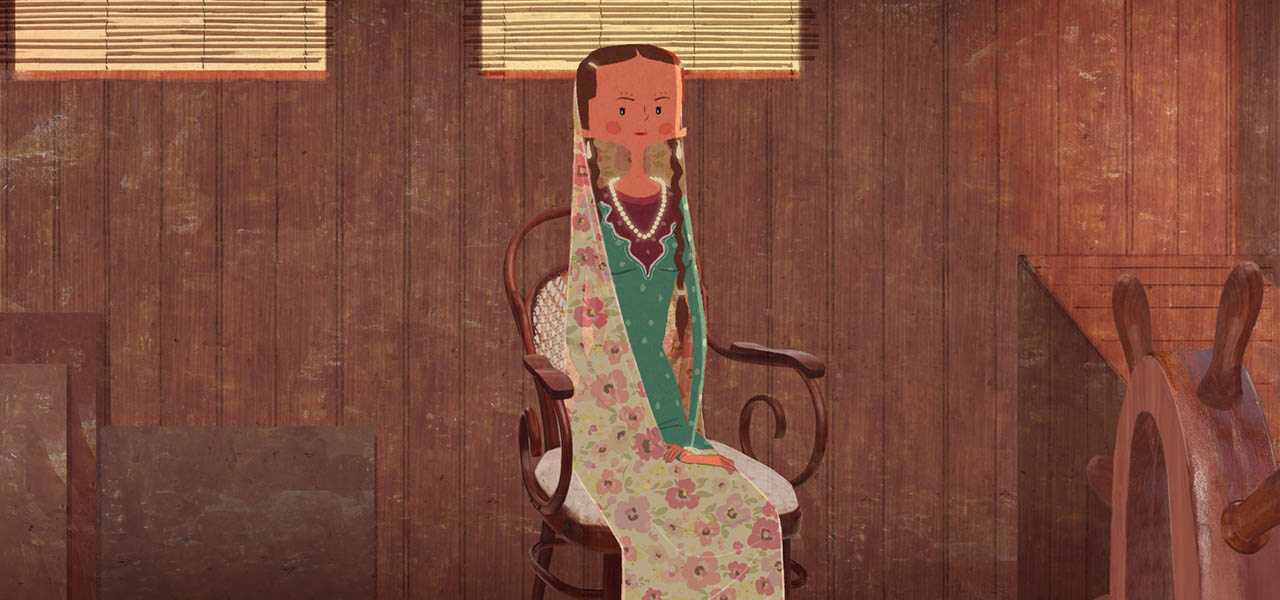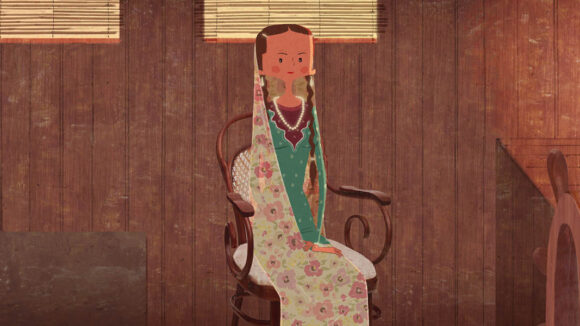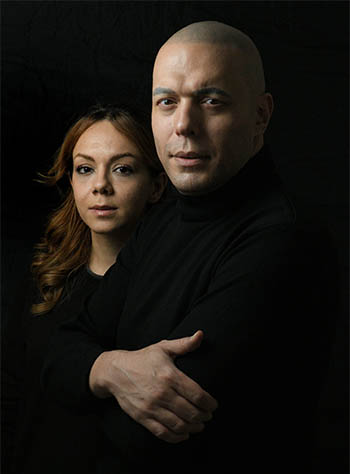

2025 Oscars Short Film Contenders: ‘In The Shadow Of The Cypress’ Directors Hossein Molayemi And Shirin Sohani
Welcome to Cartoon Brew’s series of spotlights focusing on the animated shorts that have qualified for the 2025 Oscars. The films in this series have qualified through one of multiple routes: by winning an Oscar-qualifying award at a film festival, by exhibiting theatrically, or by winning a Student Academy Award.
Today’s film is In the Shadow of the Cypress from Iranian filmmakers duo Hossein Molayemi and Shirin Sohani. The short earned its Oscars qualification by winning multiple awards, including the grand jury prize at Animayo and the best animated short award at Tribeca festival.
Living in a house by the sea with his daughter, a former captain who has post-traumatic stress disorder leads a tough and secluded life, which is pulled out of its isolation by the unexpected arrival of a stranded whale. As his daughter refuses to give up on the animal, the captain will face his own demons in this poignant universal story about resilience.
Cartoon Brew: Your fine-tuned editing, going from one character to the other, from past to present, plays a key part in bringing the heartfelt story of your film to screen. Could you elaborate on this specific aspect of your work?

Hossein Molayemi and Shirin Sohani: While we had certain priorities and obsessions in mind, our initial goal was simply to tell a story about a parent and child. We didn’t want to impose a specific goal or ending at the beginning of the story development. Gradually, our other obsessions found their way into the narrative, almost unconsciously. We preferred to let the story find its own way naturally, which is why we took our time with every detail.
Much of the editing was obviously done during the pre-production phase to avoid extra costs. However, in some key sequences, we needed to change the order of shots to achieve the best dramatic effect and enhance the consistency and continuity of the narrative. These slight modifications were rare and exceptional. We viewed the editing process as a form of retouching and minor trimming rather than making significant changes.
What was it about this story or concept that connected with you and compelled you to direct the film?
We were particularly passionate about themes such as PTSD, parent-child relationships, nature and the environment, and the impact of war. Beyond these themes, our own life experiences and a sense of responsibility towards our people—who have endured suffering over the past 46 years—compelled us to create this film, especially in honor of Iran-Iraq war veterans, many of whom still struggle with PTSD.
We understood that the journey to complete the project would be long, so it was crucial for us to be 100% certain and satisfied with the story before moving on to the next stages. Otherwise, the extensive work ahead could become an exhausting burden, leading to unsatisfactory results. In essence, achieving satisfaction at each stage acted as the fuel we needed for the subsequent phases of the film. So the more we progressed in developing the story, the more we got enthusiastic about making the film.
What did you learn through the experience of making this film, either production-wise, filmmaking-wise, creatively, or about the subject matter?
To be perfectly frank, we learned more during the process of making this film than what we were taught in university. Both of us earned our M.A. degrees in Animation Directing from Tehran University of Art, so this was not our first animated film. We had already learned the techniques and principles of animation filmmaking. However, we believe that every new project is like earning a new degree in filmmaking because each brings new experiences and challenges that require creative solutions.
It’s a matter of details rather than principles. Sometimes, we couldn’t rely on traditional methods and had to think outside the box. It felt like playing chess; we needed to arrange our crew, budget, and equipment as efficiently as possible, especially since we were making our film under extraordinary circumstances in Iran. The sanctions and the constant devaluation of our currency have made it difficult to survive in our country, let alone pursuing animation filmmaking. What we can mention here in terms of the challenges is just the tip of the iceberg.
No matter how hard we try, we can’t fully convey the harsh conditions we endured in our country while making this film. We had to create an unconventional pipeline for production and remain resilient to complete the project. As a result, we managed to make this film appear as a high-budget production, even though it was made with a very low budget compared to other productions worldwide. Thus, our experience while making this film was entirely different from working on university assignments, and these new conditions taught us many lessons that were not covered in our classes.
Can you describe how you developed your visual approach to the film? Why did you settle on this style/technique?
Firstly, it was important for us not to imitate a specific film or artist’s visual style, which is why the visual development process took longer than usual. We needed to allow enough time to make our visual style get ripe and desirable. It’s worth mentioning that we worked on the visual elements concurrently with developing the story. In our film, visual development and story development were interdependent and influenced each other. For instance, on some occasions, unexpected developments in the visual process inspired changes in the story’s direction.
We did not aim to showcase our technical skills. Instead, we were committed to maintaining a minimal and simple visual style because we didn’t want the audience to be distracted by visual elements and lose focus on the story. Our goal was to keep the audience’s attention on the drama and narrative. Additionally, the minimal scenes were intended to emphasize the character’s solitude and reinforce the sense of an ambiguous and nowhere location in the film.

